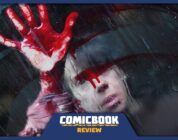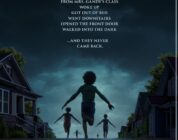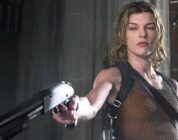When I say “witch,” who pops into your head first — Elizabeth Montgomery’s Samantha Stephens or Margaret Hamilton’s Wicked Witch of the West? Or maybe it’s Melissa Joan Hart’s Sabrina Spellman, or the Sanderson sisters of “Hocus Pocus,” portrayed by Bette Midler, Sarah Jessica Parker and Kathy Najimy. Maybe it’s the idea of the titular character that hounds the documentary film crew in the 1999 film “The Blair Witch Project.”
Pop culture in the mid to late 20th century sent wildly mixed messages about witchcraft and the occult. Even Walt Disney Productions offered conflicting depictions of witches, with characters such as The Evil Queen from “Snow White and the Seven Dwarfs” and Ursula from “The Little Mermaid” leaning into the wicked aspect of witchery, and Eglantine Price (Angela Lansbury) from “Bedknobs and Broomsticks” admirably learning witchcraft through a correspondence school in order to fight Nazis.
Clearly, the portrayal of witches in literature and cinema has evolved over the last century, generally moving away from representations of malevolent and depraved characters to benevolent figures who are sometimes progressive and empowering. And sometimes, they can be rendered as feminist advocates who challenge patriarchal norms and attitudes.
In the British folk horror film “The Severed Sun,” director Dean Puckett delivers a slow-burn morality tale about an event in an isolated religious community that provokes a witch hunt. Puckett also wrote the screenplay, which is loosely based on his 2018 short story “The Sermon.” According to press notes, the film was developed as part of the BFI, BBC Film, and Creative UK’s iFeatures program. Filming took place in Bodmin Moor in Cornwall — a landscape dotted by megalithic monuments, hut circles and cairns.
“The Severed Sun” is quietly ambitious, with heavy emphasis on atmosphere and mood. Puckett sets a distinctly ominous tone, introduces simmering conflict, and uses archetypes to evoke meaning and ambience. Despite its many positive traits, Puckett’s directorial debut is sadly missing some important components that would provide depth and clarity.
According to the film’s official synopsis, “The Severed Sun” is set in an isolated religious community governed by The Pastor (Toby Stephens), a fire-and-brimstone kind of preacher who controls his parishioners through fiery, fervent sermons. From the very beginning — and it’s a bloody beginning, with a staged death — the viewer ascertains that this sequestered society has a trunkful of dark secrets. Violently abusive relationships and domestic violence underlie the idyllic surface of the pastoral setting. The Pastor’s daughter, Magpie (Emma Appleton), takes drastic action, killing her abusive husband and making it look like an accident. The killing stirs a supernatural, elemental force connected to the land.
It doesn’t take long for the congregation to turn on Magpie, accusing her of murder. Instead of defending her, The Pastor is angered by what he perceives as her diminishing fate. Simultaneously, he is concerned that he is losing control of the group because of the chaos and paranoia that has gripped his followers because of his daughter’s deeds and rebellious attitude. This only encourages Magpie to become more defiant, and to embrace the dark, merciless force that she has awakened.
The Pastor, working with his live-in right-hand John (Barney Harris), attempts to lure Magpie back to the congregation. Meanwhile, Magpie is carrying on with her stepson, David (Lewis Gribben), while raising her son Sam (Zachary Tanner). The kettle boils when Andrea (Jodhi May) — who is also in an abusive marriage — starts hurling allegations at Magpie, accusing her of heresy, murder, causing her daughter to have fits, and fornicating with the Beast.
Presumably, she’s not talking about the Beast from the animated Walt Disney film, nor Henry McCoy, founding member of the X-Men in the Marvel universe.
It’s a solid setup, and Puckett does an excellent job of imbuing each scene with portentous dread and blistering familial tension. To the viewer, there is a constant suggestion that something is being intentionally withheld. There is a palpable sense of veiled context, as if there must be some significant backstory to explain how this congregation ended up in this remote location, and why The Pastor’s followers have chosen him as their theological autocrat. Unfortunately, those questions remain unanswered. It’s not even entirely clear when all of this takes place: Historic European witch trials spanned several centuries, but the practice was basically discontinued by the 18th century. “The Severed Sun” seems deliberately placed out of time, which is distracting and weakens the overall impact of the film. I admit, I was expecting an ending that mirrored M. Night Shyamalan’s 2004 film “The Village.”
The Beast, portrayed by James Swanton, is suitably creepy.
The film is visually striking and marvelously atmospheric. The director skillfully makes use of the gorgeous, rugged landscape to convey a sense of isolation and urgency. In folk horror, the environment often takes on a personality of its own: It is accommodating and affable to those with good intentions, and unforgiving and vindictive to malefactors and miscreants.
If I had to guess, I would say that inspirations for “The Severed Sun” came from a number of sources. Think Arthur Miller’s “The Crucible,” adapted for the big screen by Roger Corman and produced by Hammer Film Productions, with a dash of the 1922 Swedish-Danish film “Häxan” thrown into the cauldron for good measure.
In terms of conveying grim folk horror tropes, condemning abusive patriarchal social groups, and assembling a cast of actors capable of delivering solid performances, Puckett nails it. It shows the director’s strengths, as well as his shortcomings. “The Severed Sun” desperately needs better narrative structure, context, and a readiness to subvert and reformat familiar horror tropes. But it is still worth checking out, especially if you relish folk horror.
Lee Clark Zumpe is entertainment editor at Tampa Bay Newspapers, a Tomatometer-Approved Critic, and an author of short fiction appearing in select anthologies and magazines. Follow Lee at www.patreon.com/Haunter_of_the_Bijou.





